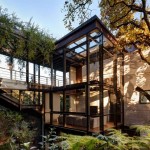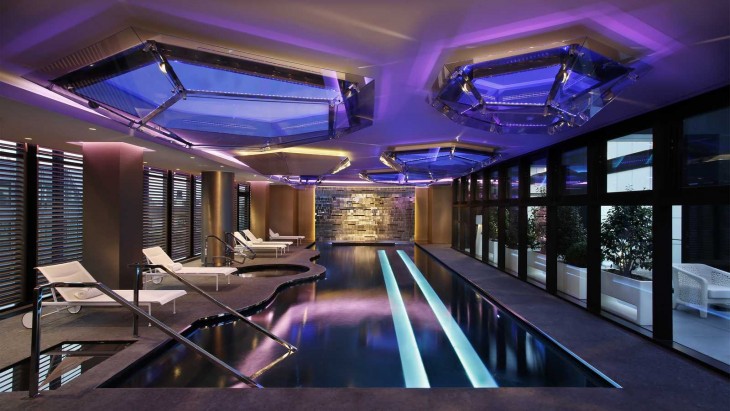
The historic Excelsior Hotel Gallia in Milan is undergoing a renovation and expansion by Studio Marco Piva, with structural and plant projectsby Arup. Take a look at more images and the complete project description after the jump.

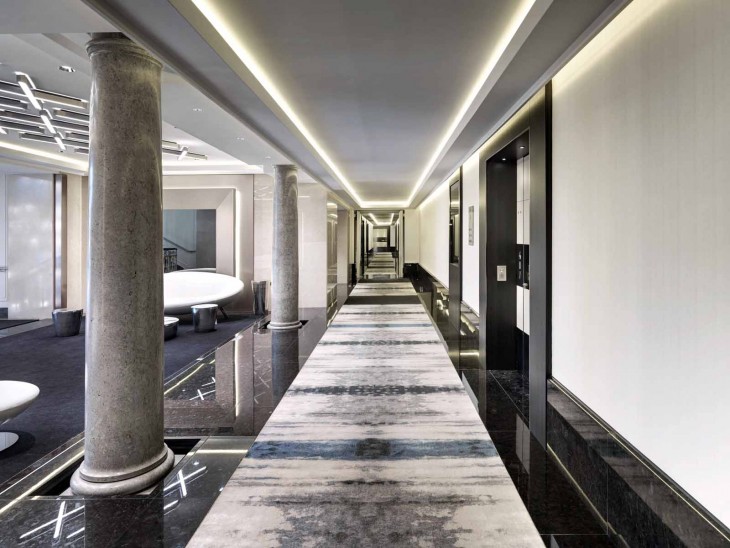



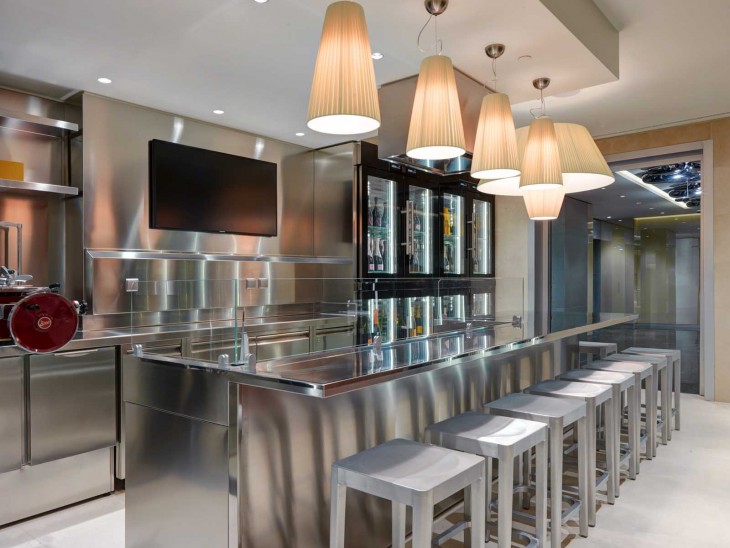
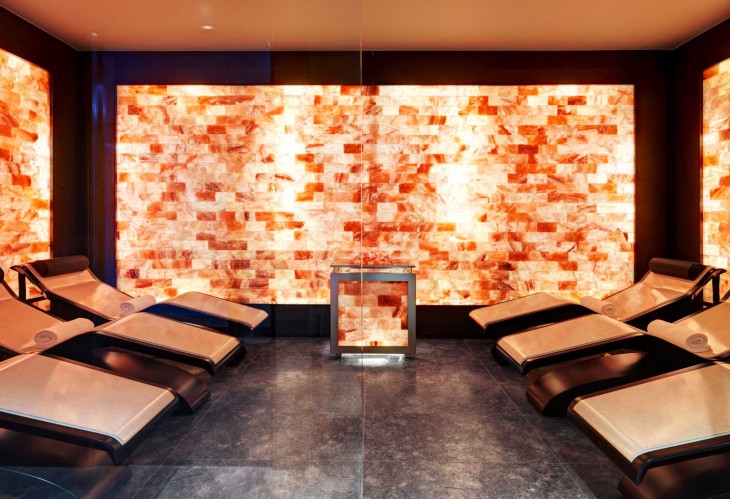
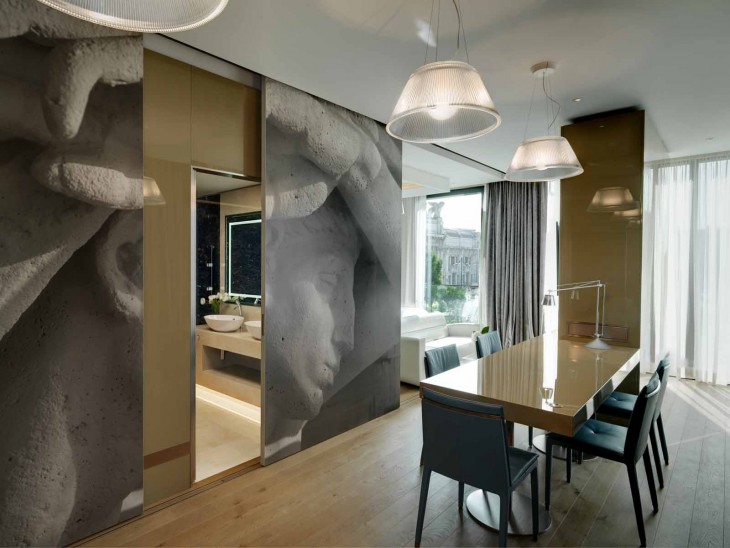
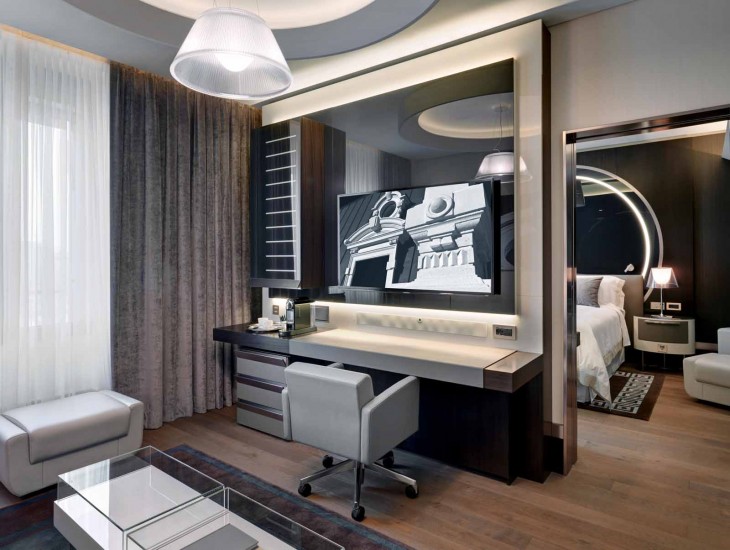
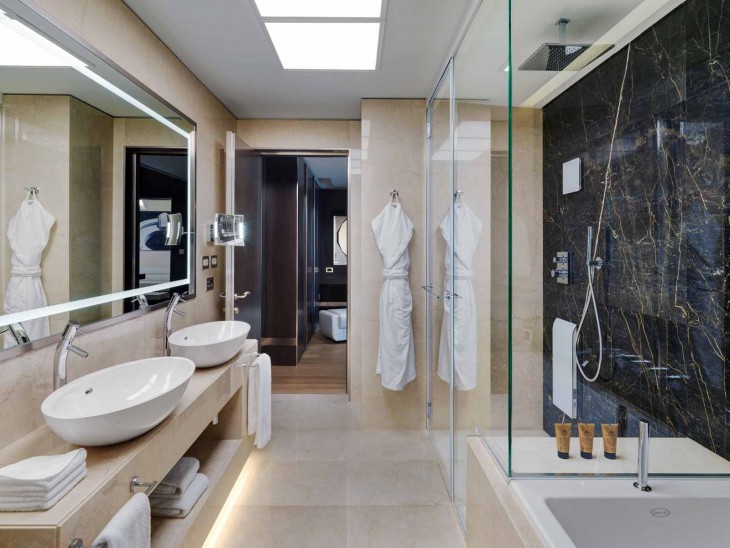
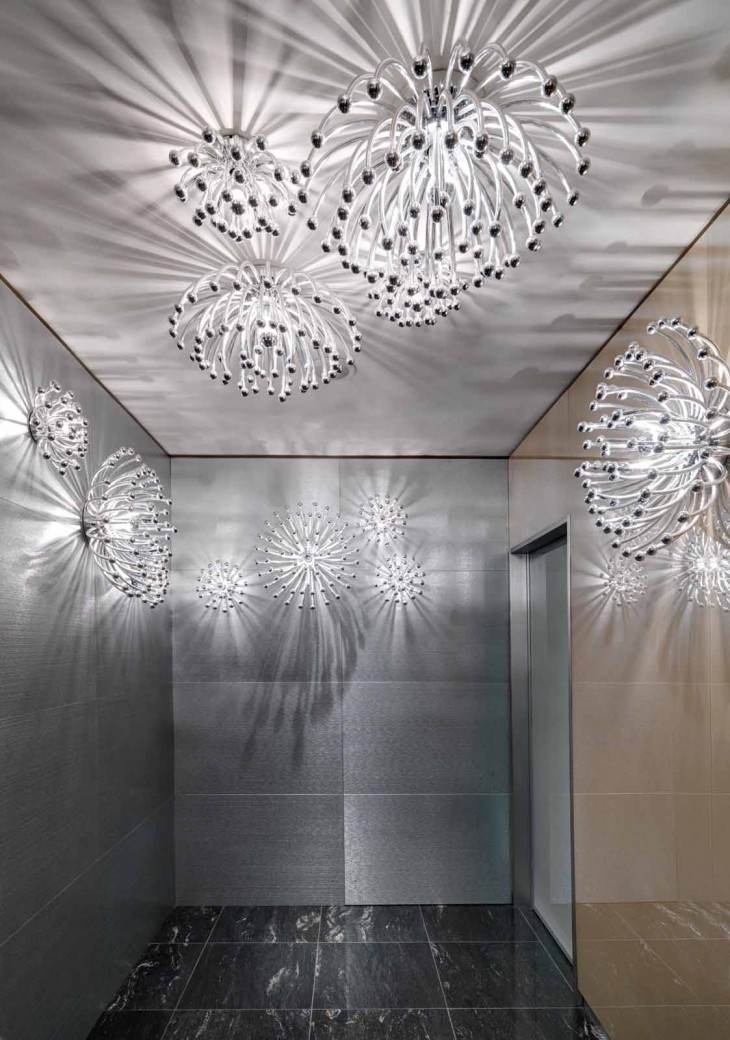


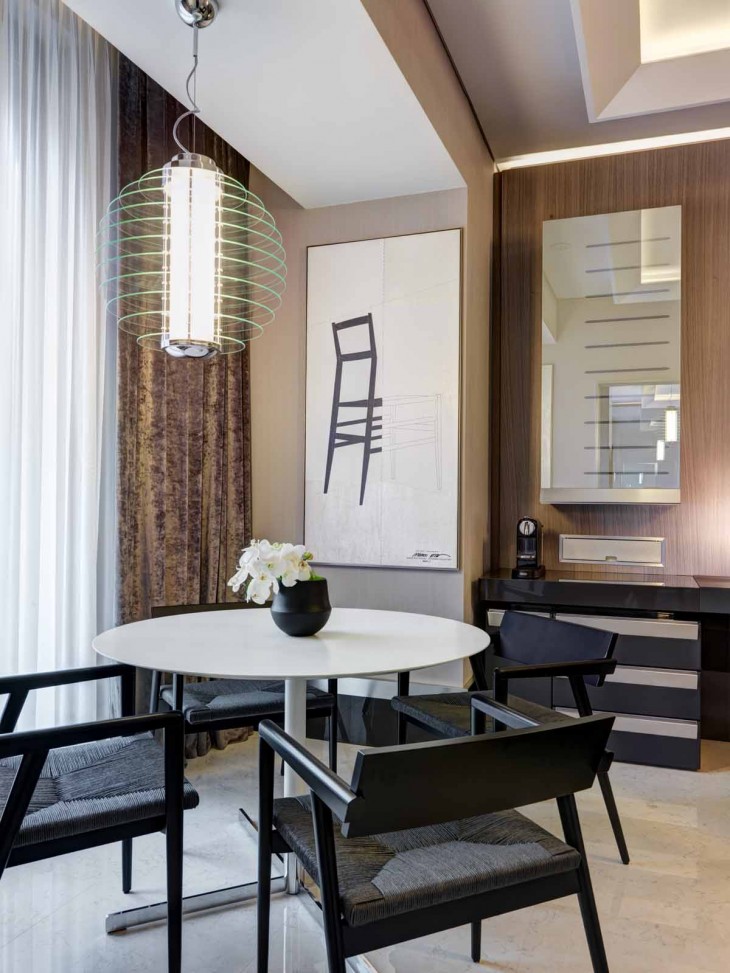

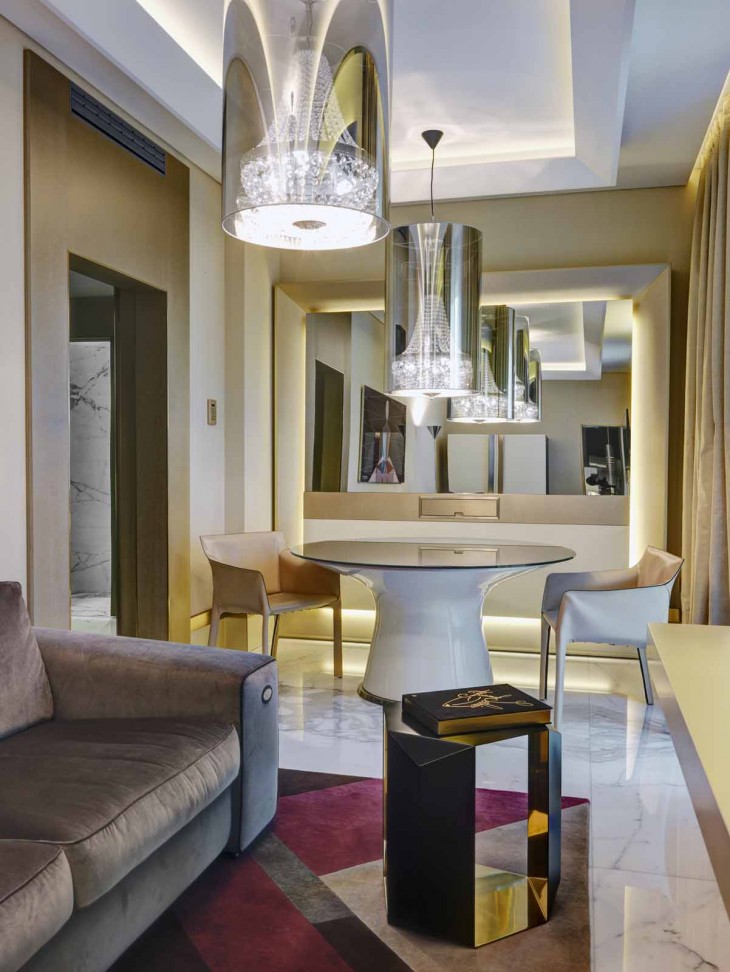


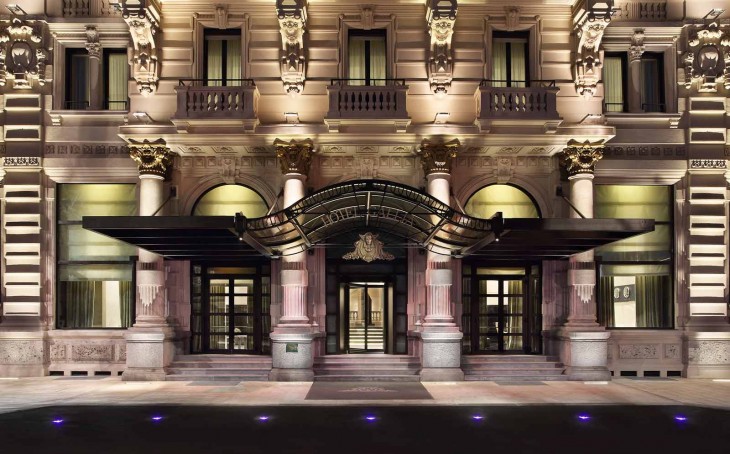
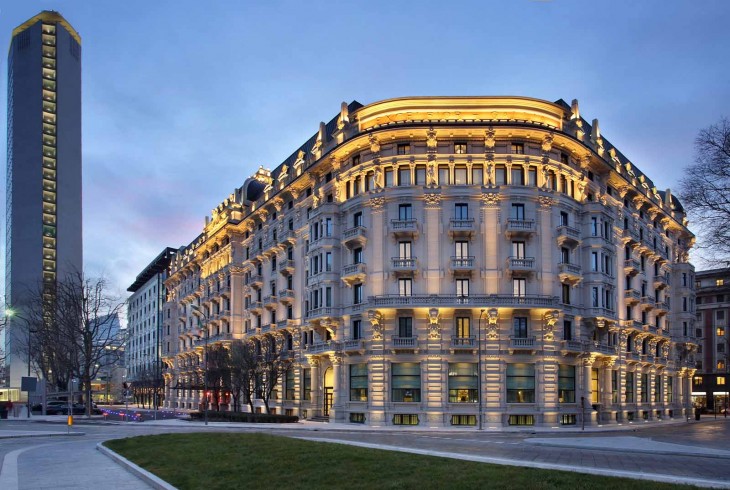
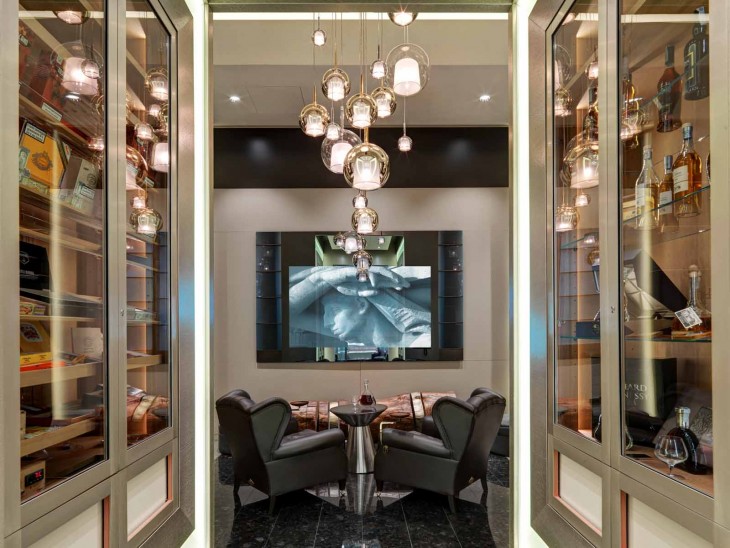

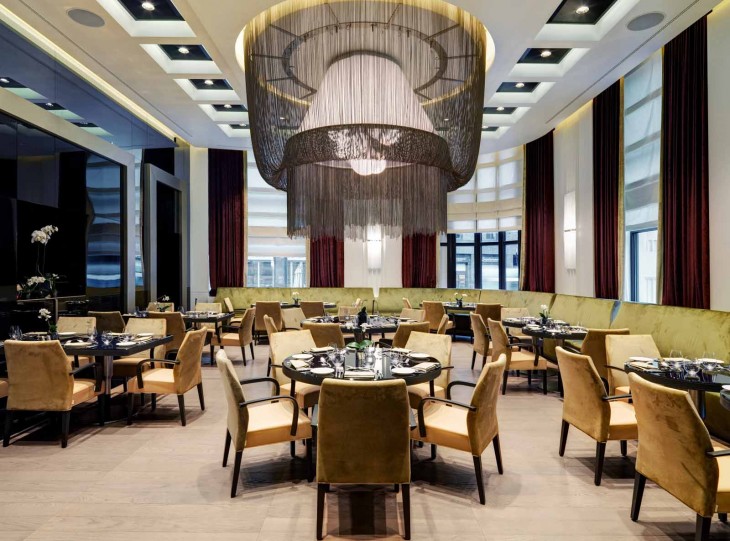
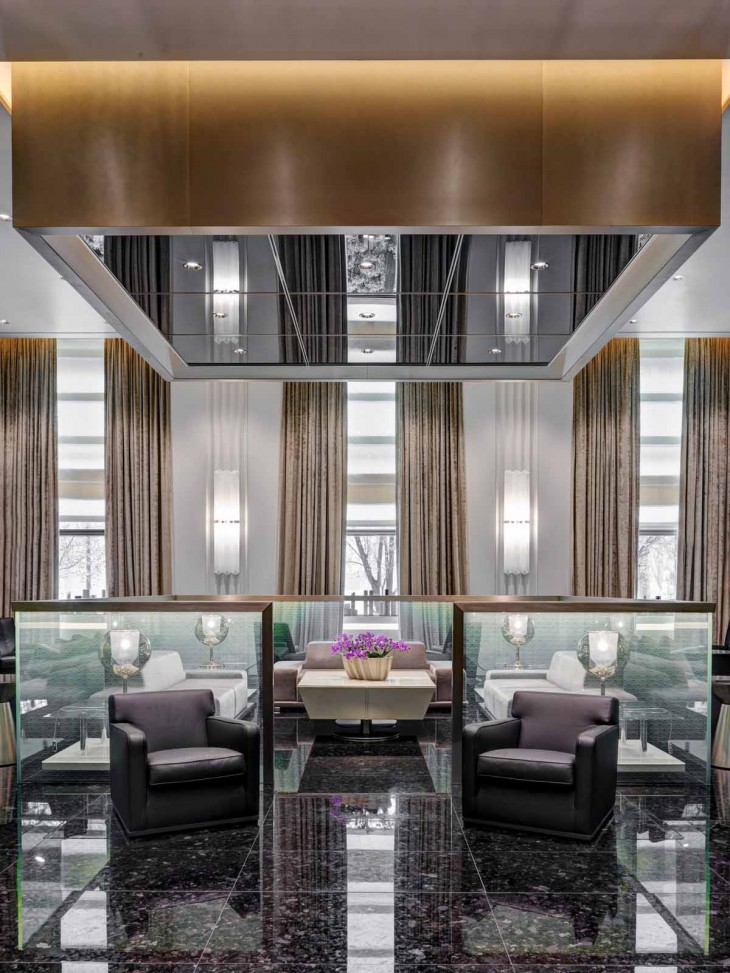
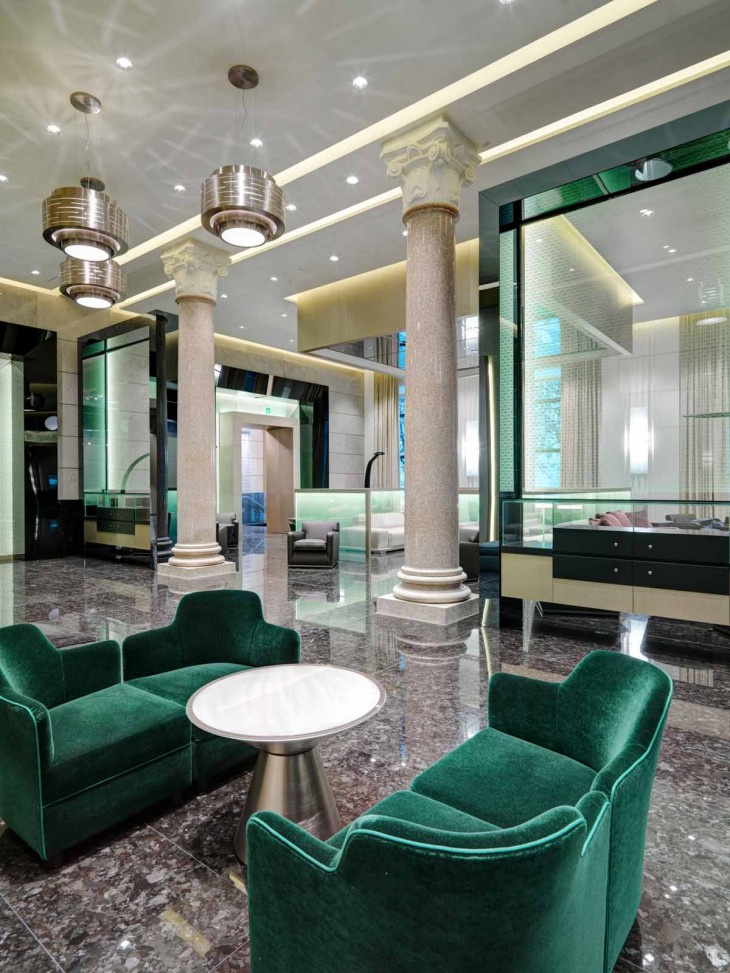
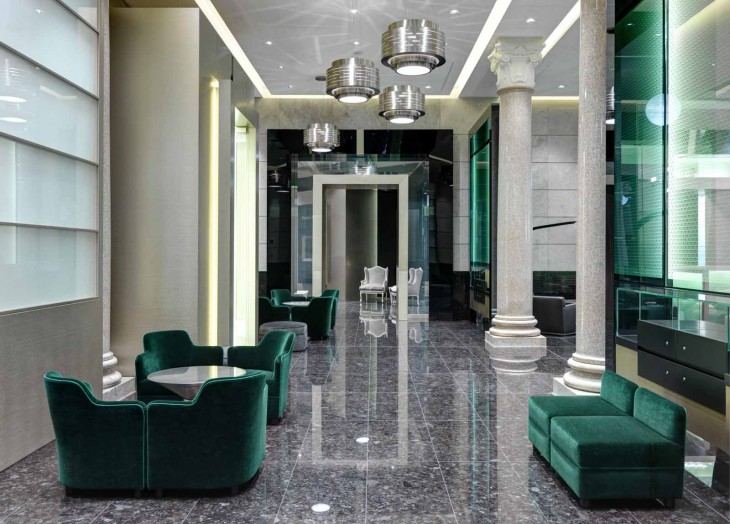


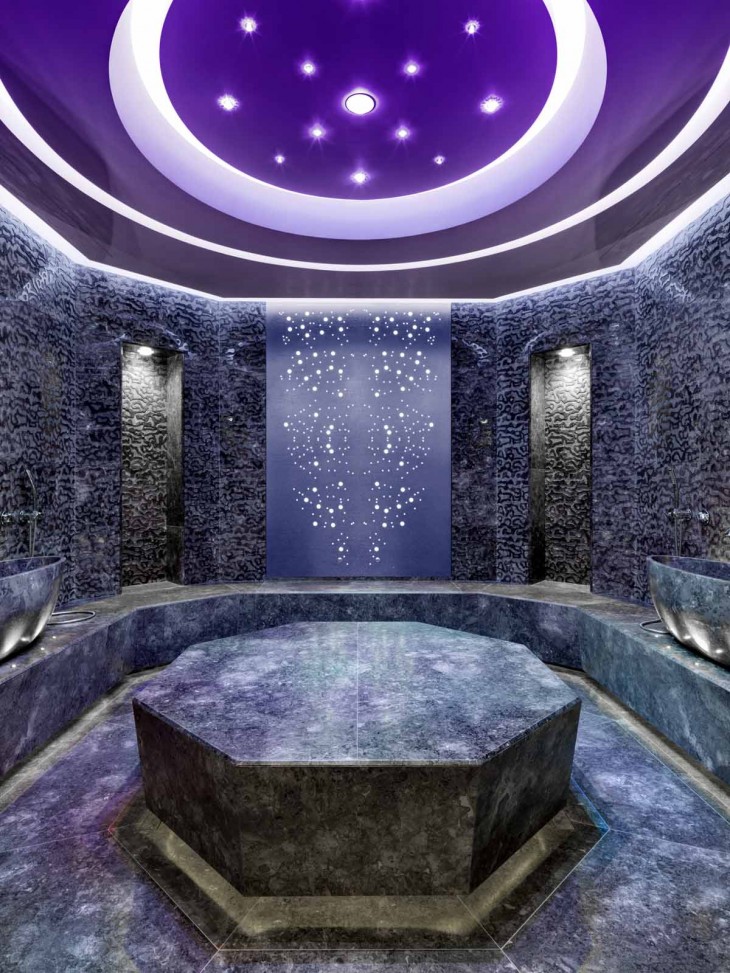
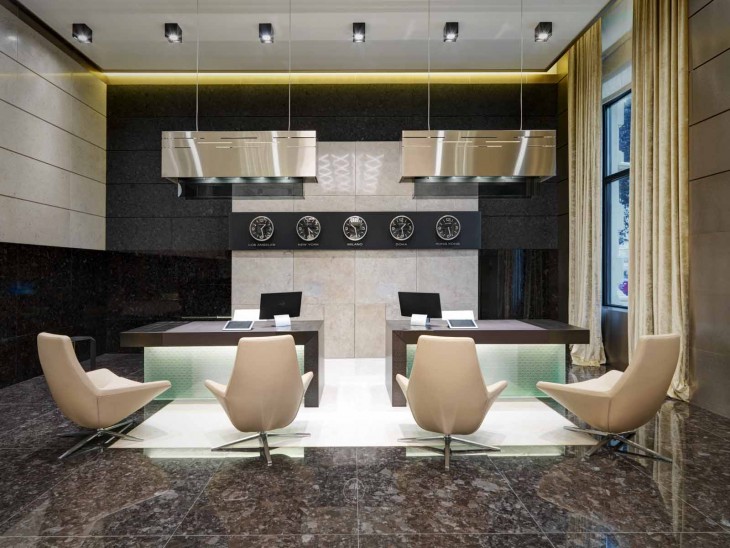
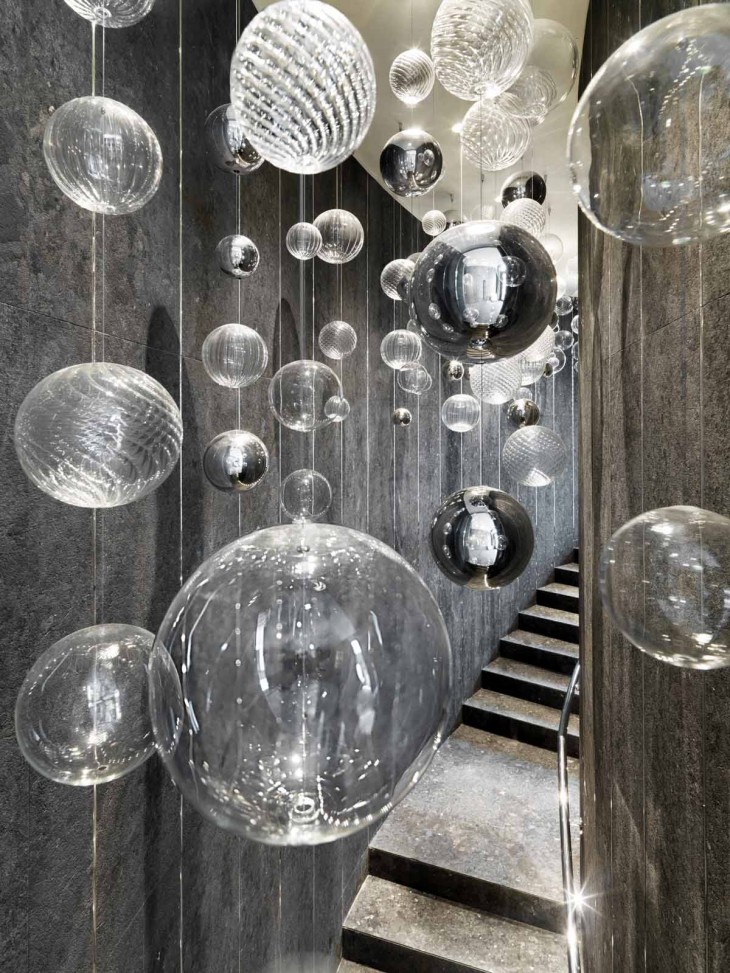
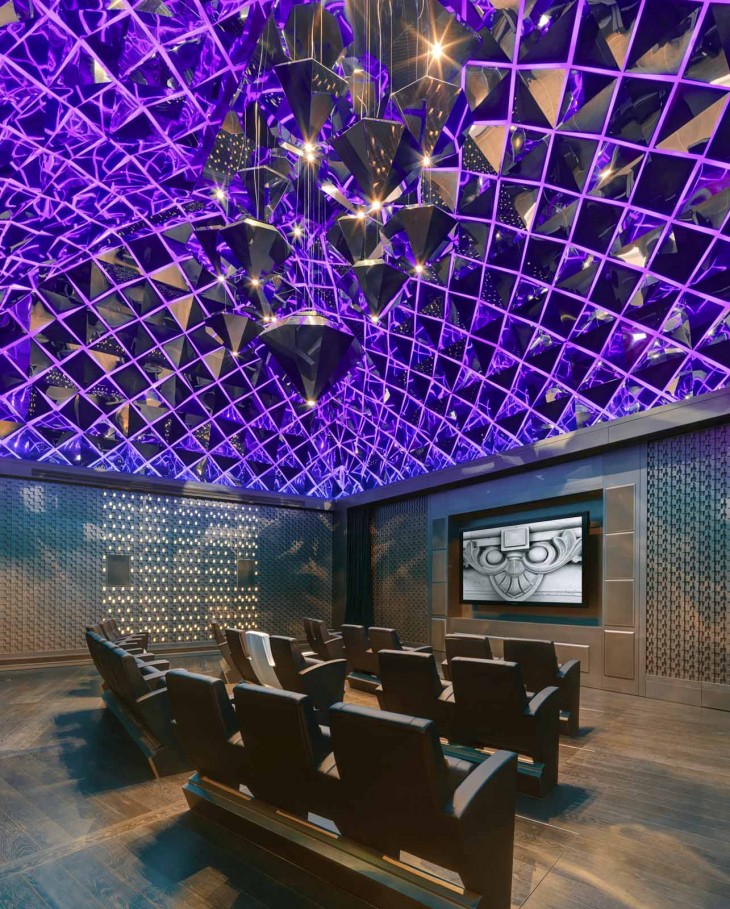


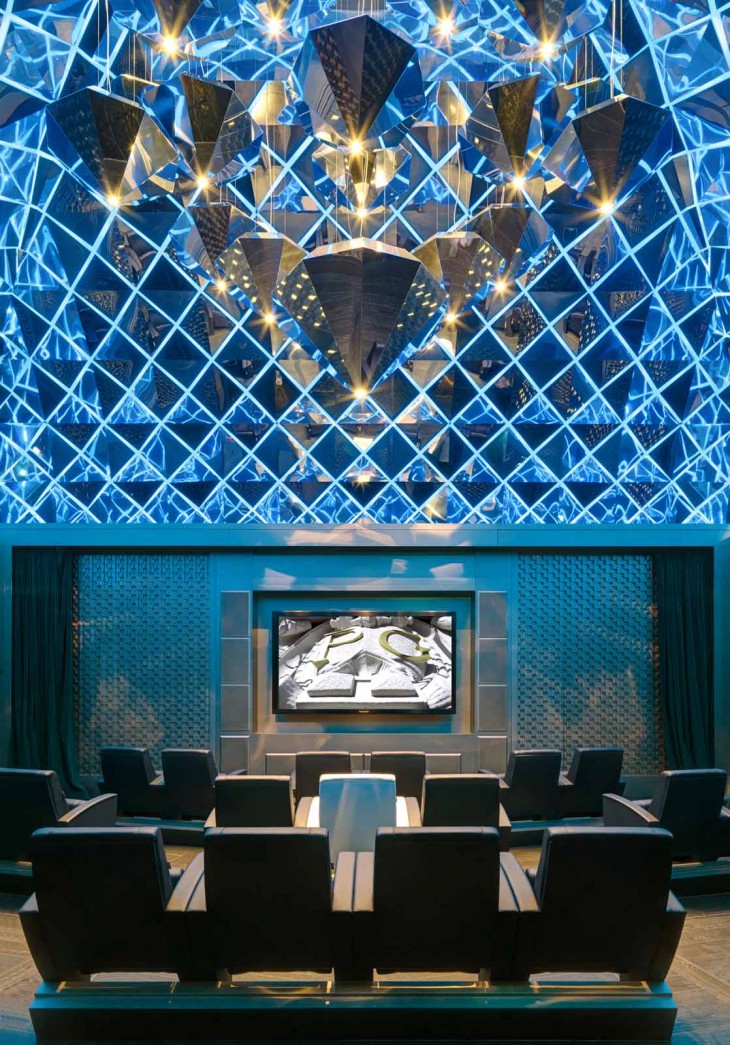
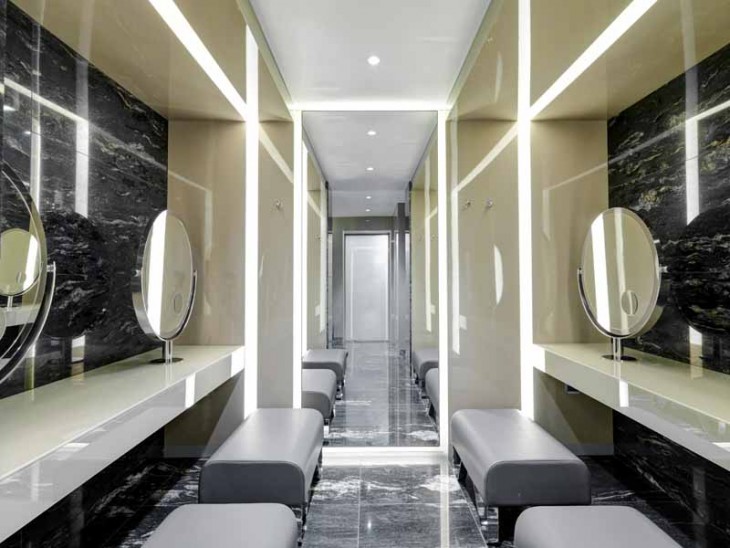




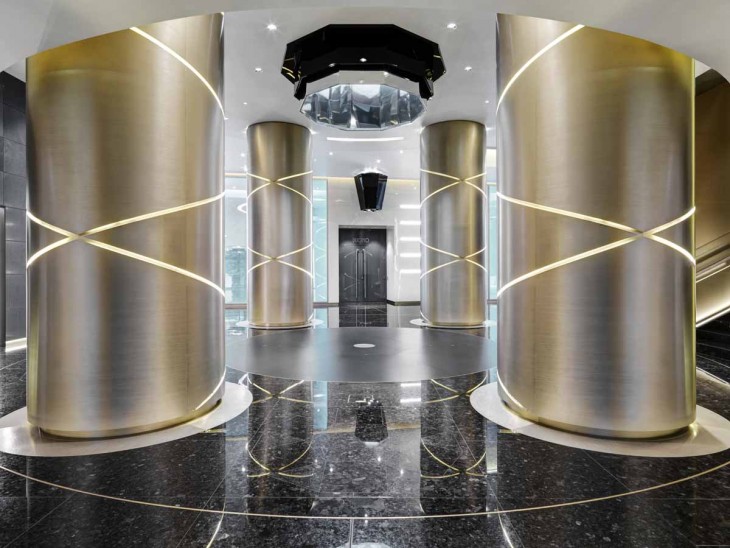
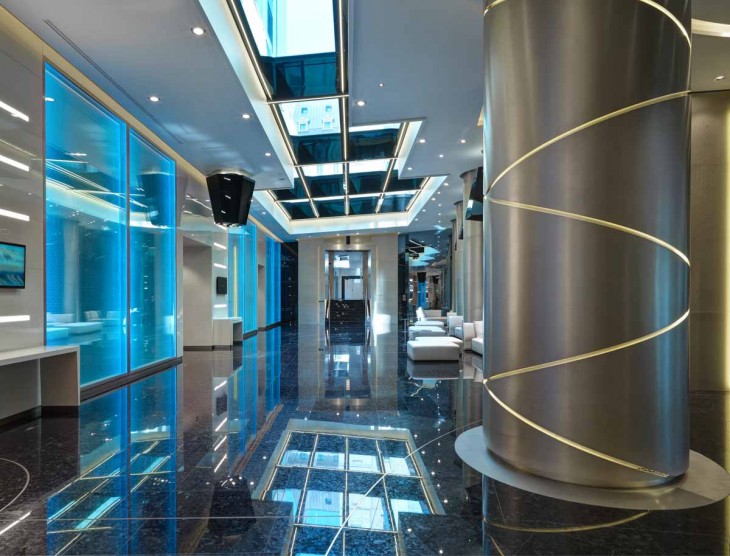


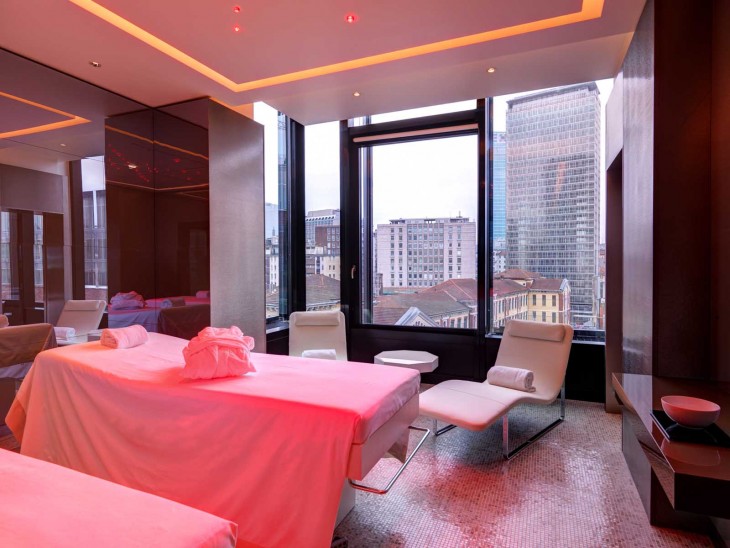
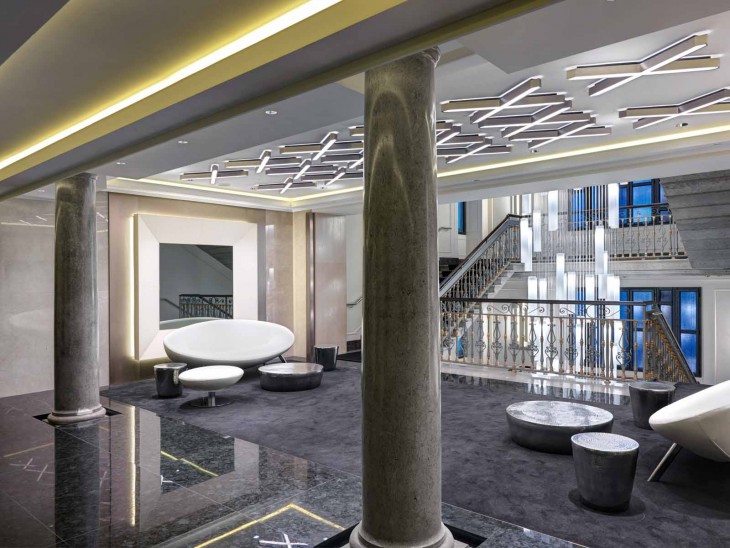












Historical Background: Acquisition of the Project and Area Covered
The renovation and expansion of the historic Excelsior Hotel Gallia, in the heart of Milan, is part of the wider urban redevelopment of Piazza Duca D’Aosta, following the recent completion of the modernization works at the Central Station. An international investment fund from Qatar has acquired the hotel, which consists of a 1930s building and an extension dating from the early 1960s known as Pirelli Wing, with the intention of turning it into a five star luxury hotel.
Other three buildings have been acquired, that form a trapezoidal lot bordered by Via Filzi, Via Galvani, Piazza Duca D’Aosta and Piazza IV Novembre.
Following an international selection process, the architectural project was awarded to Studio Marco Piva, while the structural and plant projects were assigned to Arup.
The project manager is Lend Lease and the cost controller is G&T, with its local partner SPI.
The Interiors Division of Studio Marco Piva was subsequently appointed to carry out also the Interior Design.
Global Perception of the Project and Design Philosophy
The challenge is a considerable one: to restore the accommodation facility, which now extends over the entire lot, to its past splendour, bringing the wishes of the owners and designers together in the search for a balance between the old and the new within a dynamic relationship of shapes, spaces and materials.
The new project developed by architect Marco Piva comprises a complex of buildings in which the completely restored and renovated late Belle Epoque building stands alongside a newly-designed structure facing Piazza Duca D’Aosta, via Galvani and via Filzi, to create a light steel and glass curtain, a counterpoint to the solid, monumental shapes of the “historic” Gallia.
As requested by the Client, and with the agreement of the city authorities, the new building was conceived to contrast to the historic building, the intention being that its architectural character convey a sense of connection with the modern architecture of the urban surroundings.
The screen printed glass façade, with its irregular alternating patterns of light and shade are, especially along Via Vitruvio, a connecting element between the textures of the façade of the Pirelli skyscraper and the more far-off textures of Torre Galfa and the new buildings in the Porta Nuova area.
The project concept is a reference to the Milan lifestyle, to the unique set of dynamic elements that have always been a feature of the life of the city: the unceasing interaction of the local culture with the most diverse range of other cultures, which has always been characterized by an emphasis on newness, beauty, fashion, industrial design and the dynamic, positive lifestyle in which Milan is utterly immersed, and which it exports the world over.
Design Methodology
The design approach was inspired by a study of the location and history of the building and by people’s memories.
All these elements are at the heart of the design process. The study of the site, with special emphasis on the urban context, its historical characteristics and the layers of functions and volumes, was the starting point for the studies of volumes, materials and formal aspects of the work we aimed to accomplish.
In the case of the existing buildings, especially those with a historical architectural value, the survey extended to the structural and stylistic elements, the purpose here being to identify those design elements which might be a link between history and the functional projection into the future.
So far as the Excelsior Hotel Gallia is concerned, the input we obtained from the recollections of individuals and the community at large was essential for identifying the new structure of the building that needed to be rendered more functional. For example, the Excelsior Hotel Gallia was frequented for many years by journalists and writers, hosted meetings of Italy’s football community for decades, and was often used as a film or television set.
THE PROJECT
The project to renovate and extend the Excelsior Hotel Gallia is divided into two separate but coordinated phases.
The Historic Building
The first phase includes the restoration and functional recovery of the 1930s building, the Excelsior Hotel Gallia, which was built to accommodate travellers arriving in Milan thanks to the new Central Station.
The historic building is richly decorated, with caryatids and mascarons made by using a moulding technique with a mixture of cement and aggregates. These decorative elements, like all the historic façades, have been completely restored. The steel structures built in the 1990s have been restored to accommodate a destination restaurant, an exclusive event space, and an enormous Royal Suite with four suites, a private spa and terraces.
The Modern Building
The new building is being developed adjacent to the historic building, and replaces the four structures that had previously been located at the side of the hotel.
The new building is adjacent and connected to all the floors of the historic building, and runs from Piazza Duca D’Aosta to Via Galvani and Via Filzi. It has been built around an internal courtyard, and includes a host of new features: a centre for meetings, conferences and exhibitions on the ground floor, a large spa on the sixth and seventh floors, with swimming pool, gym, saunas, hammam and a wellness centre. The seventh floor also have a bar with a panoramic terrace. All these spaces are easily accessible, even by hotel non-residents, thanks to the new high-speed lifts located in the large new ground floor lobby.
The new building is a single morphological structure extending harmoniously along three sides, creating a ground-floor area which is functionally interrelated with its surroundings and creates a powerful osmosis with the city.
A second main entrance to the hotel has been created along Via Filzi, thereby permitting the historic interior façade of the building to be restored. Although this is a less noble entrance, it has been restored to a state of great dignity, and offers a new scenario for the Via Filzi façade.
This new entrance offers direct access to a large foyer, an “interior square” covered by a glass roof between the mezzanine and the first floor.
The foyer provides access to the conference and meeting rooms which are the driver of new functions and a new relationship with the city.
Along the access point to the conference and exhibition halls, there is a large service entrance, interconnected with the hotel service activities (back of the house) and with a new system of technological equipment mostly located at the basement level, which has been completely redesigned.
Landscaping
In line with the ongoing renewal of Piazza Duca D’Aosta, a landscaping project has been created to redevelop the entire block, with particular attention being paid to green areas, pavements in stone, pedestrian pathways protected by a large glass and steel canopy and parking areas.
Interiors
The interiors of the new Hotel Excelsior Gallia have been created with great attention being paid to the choice of materials, textures and details, and there are powerful references to design and to the Milanese lifestyle, with a nod to the timeless elegance of Art Deco being added in the shapes and ambiences.
THE FAÇADES
The façades of the new building
The façade of the new building is transparent and light: they consist of 142 cm wide modules, divided into three sections, with two blind sides and an opening glass panel, which have an inner glass balaustrade to transmit light; this element is intended to recall the small balconies, almost flush with the façades, that can be found in many historical buildings in Milan.
The impact of the frame of the building is reduced to a minimum, and the uprights are concealed so as to provide continuity of the façade.
The ground floor has floor-to-ceiling windows to convey a sense of transparency and to offer optimal levels of interaction with the city and the surroundings.
The sixth and seventh floors, which house a spa, a swimming pool, an extended fitness area and a restaurant and rooftop bar, is located inside a light glass space, a glass curtain which will light up spectacularly in the evening.
The rhythms of the façade
In the historic part, the rhythm of the façade is dictated by the existing structural rhythm and windows, and is of a vertical type. All the wood window frames in the old wing have been replaced with wood and bronze-coloured aluminium frames to keep the existing colour scheme and improvements in both thermal and acoustic performance and maintenance.
The façade of the new building take up the vertical rhythm imposed by the windows of the historic building; this verticality is also underscored by the choice of materials.
Since the heights of the various storeys of the historic building are different, in order to maintain the same internal levels, the new building includes compensation bands so that the façade is modulated based on the existing structural alignments.
The interior façades of the new building are lined with basalt facings.
Lighting
To comply with the applicable regulations regarding light pollution, a lighting study of the façades has been carried out with the aim of highlighting the decorative and allegorical details of the historic building through the use of lighting systems that cannot be seen, so that the special elements and details of the building can be “described” without having an impact on the surrounding areas.
LED lighting systems have been used for both the exteriors and interiors so as to ensure a longer life for the systems and therefore less maintenance, with consequent substantial energy and cost savings.
Interior
I wanted to create “a Place“ linked to Milan’s history of excellence. A “special” place integrating and enhancing its architectural, design, customs and fashion values.
My project wanted to give Milan and travellers from all over the world an example of style and elegance, excellence in its welcome and elegant hospitality.
Marco Piva
The Excelsior Hotel Gallia building, spread over an entire lot, is once again the protagonist and an integral part of the magnificent Piazza Duca D’Aosta, dominated by the Central Station, one of the world’s most imposing and spectacular railway stations.
The new Excelsior Hotel Gallia is one of the most cutting-edge “accommodation machines” in the world; designed to offer guests the most efficient multimedia technologies, the most dynamic, spectacular light installations and the most versatile spaces for fairs, meetings, congresses and exhibitions.
Following its almost hundred-years-old tradition, Excelsior Hotel Gallia has been designed to hold really different events linked to the most exclusive art, customs and sports events.
Excelsior Hotel Gallia interior spaces and environments are magnificent, yet fluid. Each special area is marked and linked to the others through a Monumental Portals system made of black glass, metal and light.
Only the central staircase has been preserved from prior distribution of space, renovated and made monumental by a spectacular, 30-metre high Murano glass chandelier: a cascade of 180 light cylinders illuminating the eight floors of this historical staircase.
Guests, like “players” on a stage, can move freely along the over one-hundred-metres long internal Promenade, admiring window displays with the most exclusive international fashion brands, as well as stay in the quiet, relaxing spaces of the Cigar Room or the Library, to read books and newspapers or for private conversations, surrounded by art ornaments designed specifically for this surprising Hotel.
Along with the elegant Ground floor Restaurant and Bar environments, connected directly to the surrounding Piazza, the Hotel and external guests can reach the magical 6th and 7th floor areas by hyper-speed, back-illuminated quartz lifts to find one of Europe’s most exclusive SPAs, with a panoramic swimming pool.
Still on the 7th Floor, the Terrace Bar, with a breathtaking view over the underlying Piazza, and Milan’s most exclusive restaurant, connect to the Multi-function Room with its rollaway armchairs, located under the historical building’s Central Cupola, now a huge crystal room coated with 586 prisms of mirror-finished alucobon.
From now on, and for the future, Excelsior Hotel Gallia will be the First Sight of Milan for those arriving in the City, in particular during EXPO 2015: a Breathtaking Sight.
Project environments
COMMON SPACES_GROUND FLOOR
The project involved a new functional structure for the building where the entire ground floor, both historical and new parts, is a vast extension of Piazza Duca D’Aosta; with a monumental entrance hall at the heart of the historical building, the Wine Cellar (on the basement floor), Lounge, Library, Cigar Room, Bar, Restaurant and La Scala, historical venue dedicated to banquets and Meetings.
An internal “Promenade” almost 100 metres long, enriched with small “boutique windows”, connects the historical wing’s common spaces with the new building’s Grand Hall, entirely dedicated to meetings and congresses on its ground floor.
The Congress Centre’s glass-covered atrium gives hotel and external guests direct access to the spectacular 7th floor (Bar, Destination Restaurant, Spa and exclusive event space) by super fast lifts.
For choice and use of materials, the historical building was treated by emphasising all its monumental aspects, adding modern details without affecting its historical importance.
Marco Piva started by studying the original materials and surfaces and used a number of strong references from 1930s Milan architecture: the La Scala Theatre, Galleria Vittorio Emanuele, villa Necchi Campiglio, Milanese courtyards.
This led, for example, to use a considerable amount of mirroring materials, like the brown antique marble, creating a “black lake” that brings the1930s atmosphere back to life in a modern key.
The new wing recalls the dynamism of the capital of design and fashion, business and finance, the Milan Stock Exchange, with its clean shapes, light colours and modern materials such as glass and light, ethereal, luminous steel.
Choice and use of materials was fundamental for narrating spaces. For example, to highlight passing through golden portals giving rhythm to architectural passages to give guests the sensation they are crossing important passages, not just functional but almost landmark gates: from a modern to a historical building.
The most intimate venues, like the cigar room and library, were designed exclusively, as private clubs, with silk-screened glass and memories of the Milanese Liberty and Art Deco periods; from material details narrating culture and history (by thick, chamfered, reflecting and silk-screen printed glass) to traditional parquet emphasising calm, relaxing moments thanks to a soft flooring made modern by metal inserts.
The Cigar Room features the special artwork called “No Fire”: a wooden sculpture carved from a centuries-old elm tree trunk, divided into irregular sections and suspended on a metal base.
All the conference areas have been laid out to house several functions: highly flexible spaces (using mobile walls to reconfigure them based on user needs) characterised by metal inserts, a series of somewhat special geometrical features and unusual shapes.
Restaurant and breakfast room (Sala Gallia): the entire restaurant and breakfast room floor is made from an external marble frame, while the interior is made from parallel, wooden staves.
Wainscoting shapes and geometry still inspired by the 1930s, slightly angular, a more modern reinterpretation of neoclassicism.
Bar: the predominant colour of this area, designed to have a “lounge” part with stools and another with armchairs, more for a business meeting, is white. A decided contrast to the overlooking restaurant where the colour is mainly black. The curved wall has the same wainscoting and curtains as the restaurant, while the rest is Reflex painted glass. The back of the bar counter is all in leather.
Wine cellar: the cellar recalls the traditional one, its history and warmth. Glass is used to display and narrate spaces. Care is taken over the Italian wine culture, for exclusive clients, with great attention to guests. For example, with a private wine cellar for the most demanding clients.
Choice of materials for common areas was, as a whole, mainly strategic, linked to durability, from both a colour and materials point of view; not linked to current trends but to a general, timeless project concept, one that is modern and not fleeting, and of everlasting beauty.
ART WORKS
In addition to the architectural and interior design, Studio Marco Piva has created the Excelsior Hotel Gallia arts collection, the Art works; more than 500 pieces, including sculptures, paintings and photographs, located in strategic hotel areas, in common spaces, rooms and exclusive areas.
The city’s large scale and the design’s minute, detailed one were sources of inspiration for languages, materials and shapes, hybridized to create items that could dialogue poetically with their surrounding space.
Metals, wood, glass are just some of the materials in the vast selection of finishes used for the artworks, which, in an ongoing game of cross-references and reflections, relate with hotel interiors and the city’s history – like, for example, those inspired by writers and poets who have visited Milan.
ROOMS and SUITES
the new accommodation facility hosts 235 rooms, divided into three macro-categories (Premium, Prestige, Excelsior) with 29 different standard room types (for a total of 182 rooms) and 5 suite types (for a total of 51 suites), plus a Presidential and a Royal Suite.
Suite design was based on various topics; offering guests different environments for any need and conceived to leave them with different emotional experiences each time.
The various types include the Design suites. These are 8 trendy suites dedicated to Milan as capital of fashion and design, reserved to elegant guests arriving to take part in the mythical Fashion or Design Weeks, narrating the best of traditional Italian craftsmanship.
For that purpose, we need to remember that the New Wing’s large Congress Hall, the “Duomo”, was designed to hold Fashion shows and catwalks.
City, fashion and design and a maximum common denominator: Milan.
Five suites in particular, one on each floor, are dedicated to a “gentleman” of Italian design.
o Vico Magistretti (1st floor)
o Achille & Pier Giacomo Castiglioni (2nd floor)
o Giò Ponti (3rd floor)
o Luigi Caccia Dominioni (4th floor)
o Franco Albini (6th floor)
Furniture items designed by these great masters are fitted into the suites and communicate to guests the values of design and their care over aesthetic and functional details.
Atelier Suites: 17, located in the historical building at the crossroads between Via Filzi and Piazza 4 Novembre. These were designed as creative ateliers, where the fil rouge is care for materials, colours, textures, details.
Of these, the six corner ones, called the “the Poets’ Corner”, make reference, through interior furnishings and atmosphere, to writers and poets who have been guests in Milan:
o Marie-Henri Beyle, Stendhal, (1st floor)
o George Gordon Byron (6th floor)
o Ernest Hemingway (5th floor)
o Eugenio Montale, (4th floor)
o Alessandro Manzoni (3rd floor)
o Salvatore Quasimodo (2nd floor)
Signature Suites: inspired by Art Galleries, theatrical in use of materials, colours, art-works and lighting, these are 10 rectangular suites, with large corridors, overlooking the inner courtyard.
Art Suites: 6 rooms in all, at the corner of the modern façade, on the corner between Piazza Duca D’ Aosta and Via Galvani. With ample, full height, sliding panels reproducing the art photography of the historical façade and giving space flexibility. Guests can appreciate details that cannot be seen from the piazza. A historical symbol entering and merging with modernity.
These rooms’ fully glazed façade offers a broader panoramic view of the piazza, over the central station and the Pirellone.
Executive Suites: these 10 special suites are laid out to recall metropolitan environments derived from industrial buildings; a unique experience with an elegant allusion to Milan Lofts.
Most of the rooms faces inwards, in the modern area, towards the historical part; the others over via Galvani, with a view of the prestigious Pirelli skyscraper.
Presidential Suite (Gallia Suite)
The Presidential Suite is on the fifth floor, a privileged place thanks to its incomparable view of the city.
Unique in its type, it is located in the central part of the historical building, with its own balcony overlooking Piazza Duca d’Aosta.
Designed as a presidential suite, it offers guests 160 m2 for unique moments. Guests can appreciate precious marbles and design items, crafted by the best traditional Italian manufacturers of modern luxury, already from the main entrance. The four-poster bed, designed solely for this suite, was made using precious Venetian fabrics by Rubelli.
THE SEVENTH FLOOR:
The Royal Suite (Katara Suite)
On the seventh and top floor, the new Excelsior Hotel Gallia offers the unique, spectacular environments of the Royal Suite, inserted in two large steel pavilions added to the building’s original structure in the1990s.
The Royal Suite, measuring almost 1000 m2, has an exclusive SPA in the historical Lantern surrounded by greenery, where plants are chosen carefully, based on climate and exposure.
The Royal Suite is reached from the ground floor VIP Entrance by two exclusive lifts. Equipped with its own kitchen and a large hanging terrace -garden, designed to relax in and for parties under the stars, directly overlooking Central Station architecture and its spectacular, monumental statues. It is also connected to three vast supporting suites.
Exclusive events space
Renovation works have permitted full functional recovery of one of the Hotel’s most spectacular areas, the Central Cupola; a unique environment with original plant roofing.
The space under the Cupola, equipped with the most advanced audio-visual technologies, and thanks to rollaway seats, can be turned into a music or private banquet and party room in just a few seconds.
Accessible from the Central Staircase, it can be connected to the unique Royal Suite to create a large private quarter.
The panoramic bar and destination restaurant
Reached from the ground floor, thus Piazza Duca D’Aosta, you have the Lounge Bar on the 7th floor; destined to become one of the city’s trendiest bars, with a panoramic terrace overlooking the breathtaking view of the Pirelli skyscraper and the Piazza below.
The Bar is connected to the Destination Restaurant, with its own kitchen and Wine Cellar, located inside the other large steel Pavilion next to the Theatre.
The Spa
The Excelsior Hotel Gallia Spa building covers almost 1000 m2, with private entrance on the 6th floor, where the innovative, exclusive treatment areas are located. On the 7th floor both Hotel and external guests can use Saunas, Hammam, a new conception Gym and the hanging swimming pool. A pool with swimming lanes, water games, solarium and a Juice bar, and a diamond-shaped glass and steel Skylight.
CUSTOMER: Katara Hospitality
PROJECT: 5 Star Luxury Hotel
235 rooms, of which 182 standard, plus 51 suites
1 Presidential Suite (Galia Suite), 1 Royal Suite (Katara Suite)
PROJECT GRANTED TO Studio Marco Piva: Architecture, Landscaping, Lighting, Interior Design
SITE AREA: 4,273 square metres
BUILT AREA: 30,840 gross square metres
DATE: 2010-2014
PROJECT PHASE: Under Construction



